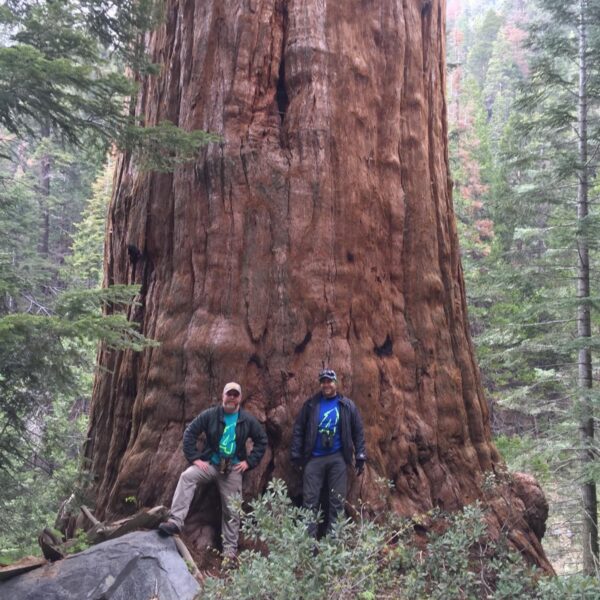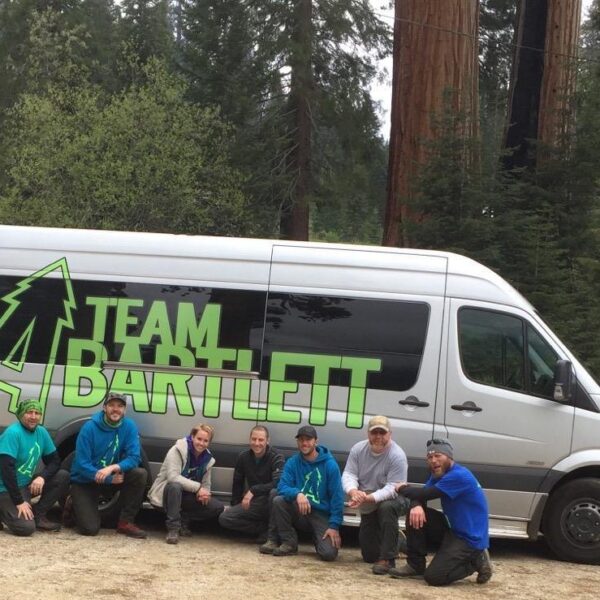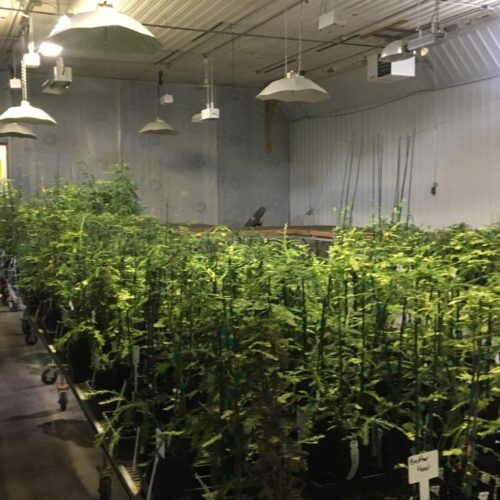In our last blog, we discussed five of what I referred to as the “Grand Cypresses”, trees that are unique in their rareness, beauty, age and resiliency.
In this blog, I’d like to feature one of Arborjet’s well known, but sometimes under-celebrated member who is dedicated to arboriculture and has played a part in saving the giant sequoia: Joe Aiken.
On the east coast, our eastern hemlock (Tsuga canadensis) is sometimes referred to as the redwood of the east, based on its natural longevity. Eastern hemlock is a conifer in the Pinaceae (pine family) and much like the coast redwood and giant sequoia, is under threat. In this case it is under threat by an introduced destructive insect, the hemlock woolly adelgid (HWA). Joe has worked on treating hemlock for HWA in studies, including at the Biltmore Estate, Asheville, North Carolina. HWA has now reached Joe’s home state of Michigan. The insect has now virtually covered the entire native range of eastern hemlock!
Just a brief recap of the Giant Sequoia:
Sequoiadendron giganteum (giant sequoia) are the most massive trees on earth occurring naturally in groves on the western slope of the Sierra Nevada mountains, California. The giant sequoia grows on average to a height of 280 feet with diameters of 26 feet. They are among the oldest living organisms on earth; the oldest know is 3200 years old! The tree is evergreen, its sap contains a significant amount of tannic acid. Though naturally fire resistant (its cones open after a fire), it is threatened by past practices of fire suppression and drought, making them much more vulnerable to crown fire. The tree can be cultivated and will withstand cold temperatures as low as -25F as long as it roots are well protected. Outside of their range, they are grown successfully in the pacific northwest and in the southeastern US. They are best grown in cool climates, with adequate soil moisture. They will not tolerate drastic temperature changes or clay soils.

In 2016, a team of 6 climbers, including Joe Aiken of Arborjet | Ecologel and Jason Kappen of Bartlett Arborist Supply, headed out to Sequoia Crest in California to climb and take cuttings from one of the oldest and largest of the sequoias: the Waterfall Tree. The cuttings were shipped to Archangel Ancient Tree Archive (AATA) in Copemish, Michigan for propagation.

Sidebar:
David Milarch is the founder of AATA, a non for profit whose mission is to save champion trees. In the last 25 years, AATA has propagated over a quarter million trees, including old growth ash from Mount Vernon (the home of George Washington), oaks from Monticello (the estate of Thomas Jefferson) and a European copper beech from Sagamore Hill (the home of Teddy Roosevelt).
_____
The team climbed to 250 feet to take tip cuttings (new growth) for propagation. The ancient tree had lost some of its height in a storm, which subsequently formed a hollow 180 feet in the main stem.



In 2021, the Windy wildfire burned the Waterfall tree, estimated to be 2500 years old. AATA headed back out to Sequoia Crest to replant the now rooted and grown trees in that fire ravaged landscape. Rooted cuttings were sent around the world, including to the Eden Project botanic garden in Cornwall, UK.

Climate change continues to disrupt the established order of ecosystems. It is primarily driven by the greenhouse gas carbon dioxide. The most effective techniques to sequester carbon is to plant trees and to compost. All plants sequester carbon. Long-lived plants, such as coast redwood and the giant sequoia, can sequester carbon for millennia. Composting then returns the captured carbon to the soil. You don’t have to plant redwoods to get this effect, however; planting trees well-adapted to your region will make a difference to the carbon equation. As it is often said: think globally, act locally! Folks like Joe Aiken and Jason Kappen are doing just that!
More on Joe Aiken, climbing the Giant Sequoias and ATTA:
https://www.bartlettman.com/blogs/news/an-interview-with-arborjet-joe-aiken
https://www.bartlettman.com/blogs/news/climbing-sequoia-trees
Join us next time for the beginning of fall for an in-depth look at one of our own researchers.
~ Signing off for now, Joe

